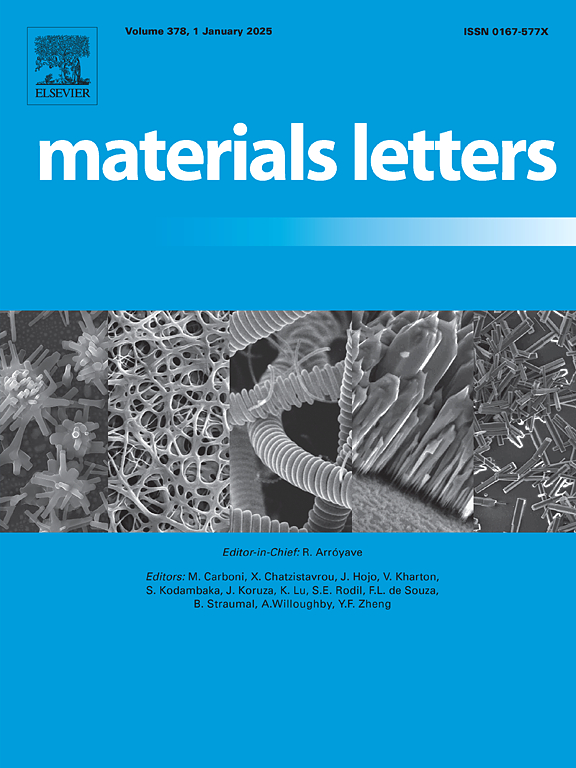用ldhs基复合材料控制胶凝材料中氯化物吸收的新策略
IF 2.7
4区 材料科学
Q3 MATERIALS SCIENCE, MULTIDISCIPLINARY
引用次数: 0
摘要
尽管通过层状双氢氧化物(LDHs)基复合材料可以改善胶凝材料中氯离子(Cl -)的吸附能力和缓蚀能力,但其长期性能仍不清楚。研究了不同保护层厚度(T-50和T-35)下多种ldh基复合材料在抗硫酸盐硅酸盐水泥(SRPC)砂浆中随时间变化的Cl -吸附行为,旨在评价吸附动力学的影响因素。结果表明,随着浸泡时间的延长,各试样的Cl -吸附量均有所增加,但在浸泡120 d后仍低于理论最大值。在所测试的吸附剂中,ldhs -强碱性阴离子交换树脂(LDHs-SBAER, 120 d后1.424 mg/g, T-35)和层状双氧化物(LDO, 120 d后1.449 mg/g, T-35)的砂浆具有较好的Cl -吸附性能和长期性能潜力。此外,Cl -吸附动力学符合ExpAssoc动力学模型(R2≥0.99),表现出明显的双相行为:最初的快速吸附阶段随后是较慢的平衡阶段。有趣的是,随时间变化的Cl -吸附与吸附剂类型和保护层厚度这两个关键参数密切相关。本文章由计算机程序翻译,如有差异,请以英文原文为准。
A novel strategy for controlled chloride absorption in cementitious materials with LDHs-based composites
Despite proven improvements in chloride-ion (Cl−) adsorption capacity and corrosion inhibition in cementitious materials through layered double hydroxides (LDHs)-based composites, the long-term performance remains unclear. This study investigated the time-dependent Cl− adsorption behavior of multiple LDHs-based composites in sulphate-resistant Portland cement (SRPC) mortar with different protective layer thickness (T-50 and T-35), aiming to evaluate the influencing factors of the adsorption kinetics. The results showed that Cl− adsorption in all specimens increased with soaking time but remained below the theoretical maximum even after 120-day soaking. Among the tested adsorbents, mortars with LDHs-strongly basic anion exchange resin (LDHs-SBAER, 1.424 mg/g after 120-day, T-35) and layered double oxide (LDO, 1.449 mg/g after 120-day, T-35) showed superior Cl− adsorption and potential for long-term performance. Besides,the Cl− adsorption kinetics conformed to the ExpAssoc kinetic model (R2 ≥ 0.99), demonstrating a distinct biphasic behavior: an initial rapid adsorption phase followed by a slower equilibrium stage. Interestingly, the time-dependent Cl− adsorption revealed strong dependence on the two key parameters of adsorbent types and protective layer thickness.
求助全文
通过发布文献求助,成功后即可免费获取论文全文。
去求助
来源期刊

Materials Letters
工程技术-材料科学:综合
CiteScore
5.60
自引率
3.30%
发文量
1948
审稿时长
50 days
期刊介绍:
Materials Letters has an open access mirror journal Materials Letters: X, sharing the same aims and scope, editorial team, submission system and rigorous peer review.
Materials Letters is dedicated to publishing novel, cutting edge reports of broad interest to the materials community. The journal provides a forum for materials scientists and engineers, physicists, and chemists to rapidly communicate on the most important topics in the field of materials.
Contributions include, but are not limited to, a variety of topics such as:
• Materials - Metals and alloys, amorphous solids, ceramics, composites, polymers, semiconductors
• Applications - Structural, opto-electronic, magnetic, medical, MEMS, sensors, smart
• Characterization - Analytical, microscopy, scanning probes, nanoscopic, optical, electrical, magnetic, acoustic, spectroscopic, diffraction
• Novel Materials - Micro and nanostructures (nanowires, nanotubes, nanoparticles), nanocomposites, thin films, superlattices, quantum dots.
• Processing - Crystal growth, thin film processing, sol-gel processing, mechanical processing, assembly, nanocrystalline processing.
• Properties - Mechanical, magnetic, optical, electrical, ferroelectric, thermal, interfacial, transport, thermodynamic
• Synthesis - Quenching, solid state, solidification, solution synthesis, vapor deposition, high pressure, explosive
 求助内容:
求助内容: 应助结果提醒方式:
应助结果提醒方式:


